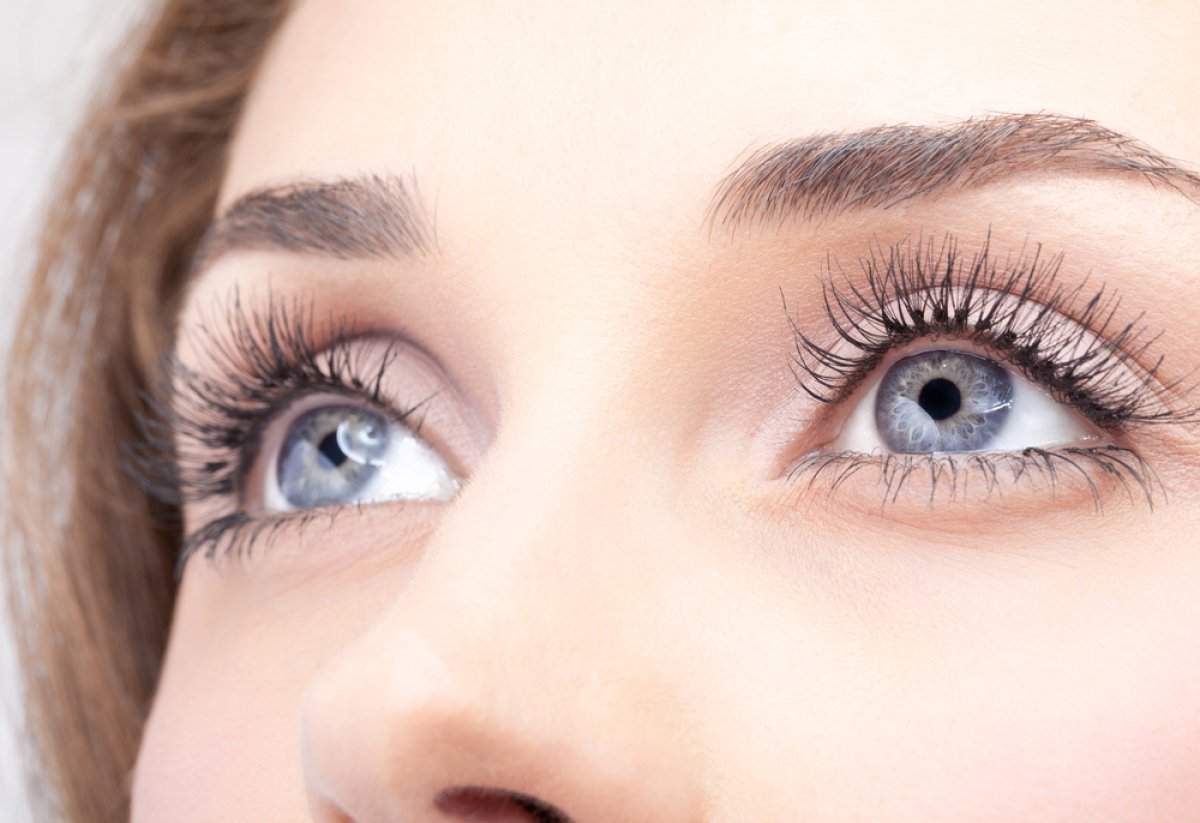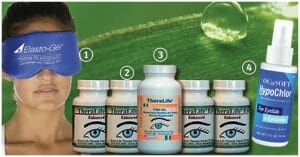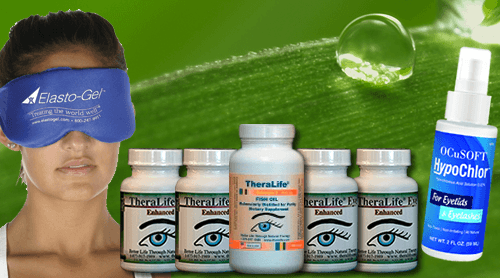TheraLife offers effective solutions for those experiencing chalazion and related eye conditions, providing products that focus on reducing inflammation and promoting eye health. Their products are designed to address symptoms like eyelid warmth, redness, swelling, and vision changes due to chalazion. By utilizing natural and scientifically-backed ingredients, TheraLife aims to relieve discomfort and support overall eye wellness. With a comprehensive range of treatments, including options for chronic conditions like blepharitis and dry eyes, customers can expect improved eye health and a better quality of life. Understanding the signs of chalazion, such as persistent inflammation, allows users to effectively use TheraLife products and gain confidence in managing their eye health.
All Natural Treatment For Chalazion- TheraLife
Add To CartKey Takeaways
- Check for firm, painless lumps on the eyelid linked to blocked oil glands, indicating potential chalazion presence.
- Observe for mild irritation and increased eyelid warmth, which suggest possible inflammation from a chalazion.
- Note any temporary blurred vision, as larger chalazia can exert pressure on the eyeball.
- Ensure regular eyelid hygiene, as poor practices can contribute to chalazion development.
- Distinguish between chalazion and stye by checking for redness and pain; chalazion is typically painless.
Recognizing Eyelid Temperature Changes
Have you noticed any changes in your eyelid’s temperature lately? Monitoring eyelid warmth is important when treating chalazions. Temperature fluctuations can greatly impact the effectiveness of warm compress therapy. Maintaining a consistent temperature of approximately 113°F is vital. A chalazion is a type of internal eyelid cyst, which forms when meibomian glands inside the eyelid become clogged. Make sure your compress is neither too cool, which won’t soften the cyst effectively, nor too hot, as it could damage the eye’s surface. It takes about six minutes for the heat to penetrate the affected gland. For best results, apply the compress for 10 to 15 minutes, at least four times daily. Consistent application helps achieve the desired therapeutic effect. Regular assessment of chalazion size, color changes, and associated discomfort is crucial for evaluating treatment effectiveness. If you experience discomfort or suspect improper temperature control, reassess your method to prevent hindering the healing process.
Identifying Unusual Redness
When observing a chalazion, how can you tell if the redness is unusual? Start by evaluating the redness intensity. Typically, chalazion redness is mild, unlike the intense redness of a stye which often signals infection. If you notice pronounced redness, it might indicate infection signs or an atypical chalazion condition. Chalazia often develop as a firm, solid lump due to inflammation, causing granuloma formation. Consistent eyelid hygiene is crucial for preventing recurrence and maintaining healthy meibomian gland function. Here’s a comparison:
| Feature | Chalazion | Stye |
|---|---|---|
| Redness Intensity | Mild | Intense |
| Pain | Usually painless | Painful |
| Location | Middle of eyelid | Eyelid edge |
| Infection Signs | Rare, usually gland blockage | Common due to bacterial cause |
| Yellowish Spot | Absent | Present, may burst |
In cases where redness is more noticeable in the morning and persists without pain, monitor for other infection signs.
Understanding Swelling Patterns
In evaluating a chalazion, understanding the patterns of swelling offers valuable insights into the condition’s progression and potential impact. Swelling mainly occurs in the upper eyelid but can affect the lower eyelid too, developing gradually due to blocked oil glands. It’s often more pronounced in the morning and can encompass a larger eyelid area as the chalazion grows. You might notice a firm lump, which could become large enough to blur vision. Inflammation from conditions like acne rosacea can exacerbate swelling, necessitating careful eyelid care. Regular use of warm compresses can help manage the swelling by promoting drainage and enhancing meibomian gland function. The blocked oil glands in the eyelid lead to the thickening of fluid, which contributes to the formation of the chalazion. Diagnosis involves clinical examination to distinguish chalazion from similar issues. Awareness of these swelling patterns and chalazion causes aids in managing symptoms effectively, ensuring timely intervention and promoting ideal eyelid health.
Noticing Discomfort in Eyelid
When you notice a small, tender, swollen area on your eyelid, it’s essential to assess for signs of a chalazion such as redness or mild irritation. Early identification involves evaluating the eyelid for sensitivity to touch and any changes in temperature or color. Recognizing these key indicators can help you distinguish a chalazion from other conditions like a stye, ensuring timely and appropriate management. With the blockage of a meibomian gland, there is often a buildup of oil that leads to the formation of a small, round lump on the eyelid. Warm compresses are a recommended treatment to promote drainage and facilitate healing of blocked glands.
Identifying Early Signs
How do you recognize the early signs of a chalazion? Start by observing your eyelid health for a small, firm lump, which is a primary chalazion symptom. This lump typically appears on the upper eyelid, though it can occur on the lower eyelid as well. Chalazia develop gradually over several days, with noticeable swelling and slight redness in the area. Unlike styes, chalazia are generally painless but can cause discomfort or tenderness. Be aware of increased swelling that might affect your entire eyelid, leading to temporary blurred vision if the chalazion presses against your eyeball. Increased tear production may occur, causing watery eyes, and morning swelling can be more pronounced. Poor eyelid hygiene, such as inadequate removal of eye makeup, can contribute to the development of chalazia. Monitoring these factors aids in early identification and effective management. Use warm compresses for 5 minutes twice daily to help dissolve the oil and alleviate symptoms.
Assessing Eyelid Sensations
Ever wonder what sensations accompany the development of a chalazion? Initially, you might experience mild chalazion irritation as the eyelid becomes sensitive. This sensitivity often manifests as tenderness when blinking, despite the typical absence of pain. It’s important to note that blepharitis and Meibomian Gland Dysfunction are primary causes of chalazia, leading to the blockage of the glands and buildup of thick fluid.
However, if the chalazion becomes infected, expect an increase in symptoms—swelling, redness, and painful irritation can intensify considerably. Chalazia are caused by a blocked Meibomian gland, which can lead to the accumulation of secretions and subsequent inflammation.
It’s critical to differentiate this from other conditions; chalazia lack the foreign body sensation or photophobia often seen in corneal lesions. Recognizing these patterns aids in accurate diagnosis and management.
Checking for Blurred Vision
When evaluating for blurred vision associated with a chalazion, determine whether the chalazion exceeds 5 mm, as larger sizes can exert pressure on the eyeball. You’re likely to notice temporary vision changes, such as blurriness, particularly when the chalazion makes direct contact with the cornea. Monitoring the chalazion’s size is essential, as a reduction often correlates with improved vision and less ocular discomfort. If the chalazion is large enough to obstruct vision, seeking medical advice is recommended to explore treatment options. It’s important to note that meibomian gland dysfunction is linked to both dry eye syndrome and chalazion formation, highlighting the need for effective management of gland function to maintain ocular surface health.
Identify Visual Changes
Have you noticed any changes in your vision recently? Blurred vision is a potential chalazion symptom, especially when the chalazion is large enough to exert pressure on the eyeball or cornea. This pressure can induce temporary astigmatism, leading to visual disturbances. Typically, chalazia exceeding 5 mm in size are more likely to cause these issues. Chalazions are more common in individuals aged 30-50, and these age-related occurrences can contribute to the frequency of symptoms like blurred vision. The distortion of the ocular surface, often coupled with dry eye syndrome due to meibomian gland dysfunction, can further exacerbate blurred vision. The inflammatory mechanisms involved in the condition can also contribute to ocular discomfort and vision problems. The location of the chalazion, particularly on the upper eyelid, plays a vital role in its impact on vision. Fortunately, once the chalazion reduces in size or is effectively treated, these vision concerns generally resolve, returning your sight to normal.
Assess Chalazion Size
While visual changes might signal a chalazion’s presence, understanding its size is vital for evaluating its impact on vision. Chalazion classification involves measuring size, as those larger than 5 mm can exert pressure on the eyeball, leading to blurred vision. The location is also essential; chalazions near the eyelid edge typically don’t affect vision greatly. Chalazions are common inflammatory lesions that can cause reversible vision changes like astigmatism and corneal irregularity. Professional evaluation by an optometrist or ophthalmologist is necessary for precise measurement and to determine appropriate treatment options. Small chalazions may resolve with conservative methods like warm compresses, while larger ones might require surgical intervention or steroid injections. Chalazions are often linked to meibomian gland dysfunction, which is a key factor in both dry eye and chalazion occurrences. Monitoring size changes through sequential follow-ups helps manage treatment and prevent vision impairment, especially in cases of recurring chalazions due to meibomian gland dysfunction.
Differentiating Chalazion From Stye
Although both chalazion and stye affect the eyelid, differentiating between them is essential for effective treatment.
Chalazion causes include clogged oil glands, often linked to chronic inflammation, acne rosacea, or seborrhea, and commonly appear on the upper eyelid. A chalazion is typically not an infection, unlike a stye, which is a bacterial infection of the eyelid’s oil glands. Regular use of warm compresses can help in the healing process by promoting drainage of the blocked glands.
In contrast, stye symptoms often start with a painful, pimple-like bump near eyelashes due to infected oil glands, accompanied by redness, sensitivity to light, and quick resolution.
Chalazia are typically painless, presenting as firmer, larger bumps, potentially causing blurry vision and eyelid drooping.
While styes resolve within days, chalazia persist longer due to their non-infectious nature.
Understanding these differences guarantees precise diagnosis, guiding treatment strategies to address underlying infections in styes and unclogging in chalazia.
Observing Persistent Warmth
When observing a chalazion, persistent warmth in the affected area can be a subtle yet significant indicator of underlying inflammation.
During your eyelid observation, note that while chalazions typically present as painless swellings, the presence of warmth suggests active inflammation due to blocked oil glands, possibly linked to conditions like chronic blepharitis. This warmth can contribute to mild eye irritation or tearing.
It’s essential to differentiate this from other eyelid issues, as persistent warmth might mimic symptoms of more serious conditions.
Diagnostic evaluation often includes a thorough external eye examination and palpation by an eye care professional.
Warm compresses are recommended to alleviate symptoms, facilitating gland drainage and reducing warmth, thereby promoting resolution within weeks.
All Natural Treatment For Chalazion- TheraLife
Add To CartFrequently Asked Questions
Can Chalazions Recur After Treatment?
Yes, chalazions can recur after treatment. Recurrence factors include incomplete drainage, infection, and poor eyelid hygiene.
Meibomian gland dysfunction and eyelid inflammation, such as blepharitis, also contribute.
Treatment options to address recurrence involve excision with curettage, intralesional steroid injections, and intense pulsed light therapy.
Managing underlying meibomian gland dysfunction is vital. Regular eyelid scrubs, warm compresses, and maintaining good hygiene can help in preventing recurrence effectively.
Is a Chalazion a Sign of an Underlying Health Issue?
A chalazion can indicate underlying health implications.
When you experience recurring chalazions, it might suggest chronic conditions like blepharitis or eczema, which cause thickened meibum and blocked oil glands.
These chalazion causes might require further clinical evaluation.
In some cases, systemic conditions or skin disorders like acne rosacea might contribute.
Understanding these health implications helps you address the root causes, preventing recurrence and ensuring thorough treatment strategies.
How Long Does a Typical Chalazion Last?
You might find a chalazion hanging around longer than you’d like, with its duration ranging from a few weeks to several months.
Factors like size and individual healing responses play a big role in its stay. Typically, the healing timeline depends on early intervention with warm compresses.
Smaller chalazia tend to resolve quicker, while larger ones or those in older individuals might linger.
If it overstays its welcome, seek medical advice.
Are There Lifestyle Changes to Prevent Chalazions?
To prevent chalazions, incorporate hygiene practices and dietary adjustments.
Maintain good personal hygiene by not touching your eyes and regularly cleansing your face and eyelids. Change makeup frequently and keep brushes clean to avoid bacterial infection.
Clinically, a diet rich in vitamins A, C, and E boosts immunity. Consume foods like fish, leafy vegetables, and sunflower seeds.
These evidence-based steps help maintain eye health and reduce chalazion risk.
Do Chalazions Affect Both Eyelids Simultaneously?
Imagine your eyelids as twin gates protecting a fortress. Chalazions can attack both gates, leading to symmetrical occurrence, although it’s more common for one gate to be breached.
Eyelid health hinges on managing inflammation and blocked oil glands. While they often affect the upper eyelid, they can appear on both simultaneously, especially if underlying conditions like blepharitis are present.
Maintaining eyelid hygiene helps manage these recurrent warriors effectively.
All Natural Treatment For Chalazion- TheraLife
Add To CartConclusion
Imagine gently closing your eyes and feeling an unusual warmth, like a small, persistent ember resting on your eyelid. This could be your body’s subtle signal of a chalazion. By staying attuned to this warmth, you can detect the telltale signs: unusual redness, a swelling pattern that’s distinct, and discomfort like a gentle, constant pressure.
TheraLife offers a range of products that can help customers address these symptoms effectively. Their approach focuses on natural and holistic treatments, designed to enhance eye health and provide relief from conditions like chalazion and dry eyes. TheraLife’s products aim to improve overall eye function, reduce inflammation, and support the body’s natural healing processes, offering a comprehensive solution for those seeking relief.
Remember, differentiating a chalazion from a stye is essential. Trust your observations and seek clinical advice to guarantee precise diagnosis and treatment. TheraLife’s offerings can be a valuable part of your eye care regimen, promoting better eye health and comfort.





